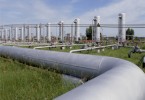The new Network Code for gas transmission, a big step towards functionality
A new Network Code for Gas Transmission enters into force on 1 October 2018, bringing important changes at the level of principles compared to the last versions of the Code, being able to finally make applicable this norm and contribute to ensuring the functioning of a liberalized market. The Intelligent Energy Association in 2016 launched a country project called Starting over in the gas market with 10 steps, in order to build a real market and remove the pseudo market that is first of all detrimental to gas consumers. Following round table meetings organized in this period by the Association in order to debate the fact that We can have a fair gas price only with an objective Network Code and a functional market, it resulted that:
- a) There is a unanimous opinion at gas market level that We need a Network Code in Romania!
- b) Market participants have identified a number of causes of non-operation of the current Network Code in Romania, summarized in 7 categories (https://asociatiaenergiainteligenta.ro/?p=1131&lang=ro):
- Physical configuration of the current NTS and adjacent systems
- Legislative framework antagonistic to the old Network Code
- Incomplete and incoherent text of the old Network Code
- Nonexistence of flexibility mechanisms in the Romanian gas market
- Lack of IT platforms and modality for data transmission
- Sabotage of the Network Code implementation process
- Incompetence
- c) The Intelligent Energy Association has proposed a minimum set of principles to be taken over in the Network Code (https://asociatiaenergiainteligenta.ro/?p=1255&lang=ro):
- separation of contracting for entry capacity from exit capacity,
- entry capacity contracted exclusively by the system partner or its authorized representative (producer, storage operator, domestic importer),
- exit capacity to be contracted by any system partner
- trading of quantities to be made exclusively in the Virtual Trading Point (VTP), after gas introduction in the NTS and before delivery to the Distribution Systems from the NTS. For gas in the case of which the physical circuit does not interfere with the NTS, it is necessary to define other types of Trading Points, in distribution systems, in regional or local pipelines, in upstream pipelines etc.
- ensuring the legal exception, on allowing natural or legal persons to trade intraday and ex-post imbalances, without holding commercial license, by introducing in the Gas Law the Exchange Titles,
- establishing a Gas Market Operator, independent from the transmission activity, organized as company, licensed by ANRE and with regulated activity, which will have exclusively the role of counterparty in transactions, without being able to become owner of gas traded, and which will benefit from 0 profit from this activity. Thus, equidistance is ensured between the NU and TSO, and there is a possibility to sanction the TSO when it introduces imbalances in the NTS, respectively payment to other NU for gas consumed by the TSO and not received by the NU.
A summary initial evaluation of the New Network Code, given the aforementioned, shows that although some of the principles proposed to ensure the functioning of a Network Code in Romania have been taken over, and for which we believe an important step forward has been taken, there are still many elements that haven’t been addressed, which in our opinion raises multiple question marks on ensuring the normal functionality of this New Network Code. The Intelligent Energy Association plans to conduct a series of analyzes of the new Network Code, together with market participants, to establish in a fair and concrete manner the added value of this New Network Code. We believe this is necessary given the situations in the previous years, when due to existing ambiguities important shortcomings have occurred in the Security of the Natural Gas Sector in Romania, establishing additional payments for NU, some unjustified, which in the end were reflected in the price of gas to end-consumers, especially in the price paid by population.
Translation from Romanian by Romaniascout.



Recent Comments